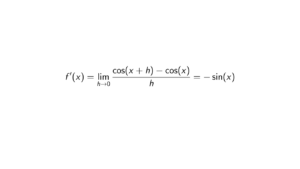The group Z(G) is a subgroup of N_G(A) for any subset A of G.
Proof. Recall that the centrum of a group
G is defined as
\begin{align*}
Z(G) &= \{g \in G \ | \ gx = xg \text{ for all x\in G}\} \\
&= \{g \in G \ | \ gxg^{-1} = x \text{ for all x\in G}\},
\end{align*}
and the normalizer of a subset
A of
G is defined as
\begin{align*}
N_G(A) = \{g \in G \ | \ gAg^{-1} = A\}
\end{align*}
It is obvious that
Z(G) is a subset of
N_G(A). To show that
Z(G) is a subgroup of
N_G(A), we can use the subgroup criterion. That is, we need to check that
Z(G) is non-empty and for all
z_1,z_2 \in Z(G) implies
z_1z_2^{-1} \in Z(G).
The first criteria we will check is that
Z(G) is non-empty. This is easy as if we take the identity element
e \in G, then
ge= g and
eg = g. So
e \in Z(G).
The second and last criteria we need to check is that for all
z_1,z_2 \in Z(G) implies
z_1z_2^{-1} \in Z(G). We know that
z_1g = gz_1 and
z_2g = gz_2 for all
g\in G. Further, we have that
z_2^{-1}gz_2\ = g for all
g \in G. So we can substitute
z_2^{-1}gz_2\ = g into
z_1g = gz_1. So all together, we get for all
g \in G:
\begin{align*}
z_1g = gz_1 &\iff z_1z_2^{-1}gz_2 = gz_1 \quad \quad \text{ substituted } g = z_2^{-1}gz_2 \text{ on LHS}\\
&\iff z_1z_2^{-1}gz_2z_2^{-1} = gz_1z_2^{-1} \\
&\iff z_1z_2^{-1}g = gz_1z_2^{-1}.
\end{align*}
This implies that
z_1z_2^{-1} \in Z(G), and therefore,
Z(G) is a subgroup of
N_G(A) for any subset
A of
G.
